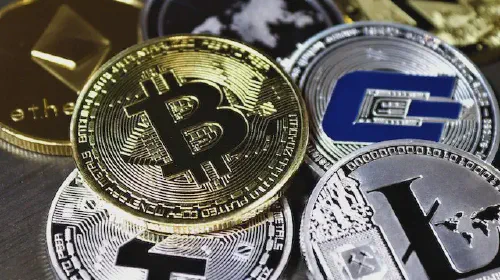Factors Driving the Digital Payment Wave: Advancements, Convenience, Security, Pandemic Impact, and Cashless Societies
Salomon Kisters
Jun 2, 2023This post may contain affiliate links. If you use these links to buy something we may earn a commission. Thanks!
In recent years, there has been a significant shift towards digital payments. With the rise of advanced technology and smartphone usage, it has become increasingly easy to make cashless transactions. From online shopping to bill payments, digital payment methods are becoming more prevalent every day.
So what’s behind this surge in digital payment adoption? Is it just a passing trend, or is there a deeper shift happening in the world of finance?
In this blog post, we’ll explore the various factors driving the digital payment wave, and what they mean for consumers, businesses, and the financial industry as a whole.
The Rise of Mobile Payments
Ever since the introduction of smartphones, the world has undergone a massive digital transformation. Nowadays, people prefer to conduct their day-to-day activities, such as shopping, banking, transportation, and communication, on their mobile devices.
Mobile payment is just one such activity that has become very popular recently.
Mobile payments are digital transactions that allow users to make payments for goods and services through their mobile devices, such as smartphones or tablets. Mobile payments have gained popularity in recent years because of the convenience they offer. It eliminates the need for carrying cash or credit cards, which are more susceptible to fraud or loss.
With mobile payments, users can now easily make transactions from remote locations, and the payment is processed in real-time, making it quicker and more efficient. The rise of mobile payments has led to the growth of various payment platforms such as Apple Pay, Google Pay, Samsung Pay, and Paypal.
Mobile payments have revolutionized the way people conduct their financial activities. Today, it has become an essential part of our digital lives, making it easier and more convenient for users to pay for goods and services anytime, anywhere.
Convenience and Accessibility for Users
Digital payments have brought unmatched convenience to users, making transactions quicker and simpler than ever before. With just a few taps on their smartphones, users can now complete transactions, pay bills, and transfer funds within seconds.
Moreover, digital payments eliminate the need for carrying cash or cards while running errands or traveling, providing users with greater mobility and freedom.
Furthermore, digital payments have also made financial transactions more accessible to people who were previously excluded from traditional banking systems. In many developing countries, digital payments have enabled people to conduct financial transactions without the need for a bank account.
The use of mobile wallets and other digital payment tools has made it possible for people with limited financial resources to take advantage of the financial system.
Convenience and accessibility are the primary driving forces behind the adoption of digital payments over traditional methods. With the ever-growing popularity of smartphones and internet connectivity, digital payments are poised to become the default means of conducting financial transactions in the near future.
Advancements in Security Measures
Security has been a major concern for digital transactions, but advancements in technology have addressed these concerns to a great extent.
Firstly, the introduction of two-factor authentication (2FA) has made transactions more secure, with users being required to provide an additional layer of identification such as a password or fingerprint.
Another major advancement has been the integration of Artificial Intelligence (AI) and Machine Learning (ML) in detecting and preventing fraudulent activities.
These technologies can quickly identify and flag any suspicious activities, thereby reducing the risk of fraudulent transactions. In addition, the use of tokenization, encryption, and biometric authentication has made digital payments safer and more secure.
Moreover, the implementation of secure payment gateways has largely contributed to the growth of digital transactions. Payment gateways ensure that sensitive information such as card details are encrypted and securely transmitted, making it difficult for them to be hacked.
Finally, the adoption of blockchain technology has brought more security and transparency to digital transactions. The decentralized nature of blockchain ensures that transactions are secure, private, and tamper-proof.
With these advancements in security measures, it is no surprise that digital payments have become the most preferred mode of payment for many people.
Impact of Pandemic on Digital Payments
The recent pandemic has drastically altered the way people interact with their finances. With social distancing measures and lockdowns being implemented globally, most brick-and-mortar establishments have had to close their doors.
This has led to a surge in demand for digital payment solutions, as people continue to make transactions from the safety of their homes.
The use of digital payment methods like mobile wallets, online banking, and contactless payments has seen a significant uptick in recent months. In fact, many businesses that once resisted accepting digital payments are now actively encouraging their use.
Additionally, governments around the world have been promoting digital payment solutions as a way to minimize physical contact and reduce the risk of transmission. This has led to increased adoption of cashless payment methods, with many countries seeing a decline in the use of physical cash.
The pandemic has shown the benefits of using digital payment solutions, and it is likely that this trend will continue even after the pandemic is over. With the convenience and speed of digital payments, it is no surprise that more and more people are leaving traditional payment methods behind.
Future of Digital Payments and Cashless Societies
As technology continues to advance, digital payments are likely to become even more common. In fact, some experts predict that we could eventually move towards a cashless society. This would involve relying solely on electronic payment methods like credit cards, mobile payments, and cryptocurrency.
One advantage of a cashless society would be the reduced risk of theft and fraud. Electronic payments are generally more secure and easier to track than cash. Additionally, going cashless could lead to greater financial inclusion, as individuals without access to traditional banking services could still participate in the digital economy.
However, there are also potential downsides to consider. A cashless society could be problematic for those who prefer using cash, particularly elderly individuals or those without access to electronic payment methods. It could also exacerbate existing inequalities, as some individuals and communities may struggle to adapt to a digital economy.
Overall, while the future of digital payments and cashless societies is uncertain, it is clear that electronic payment methods will continue to play an increasingly important role in our live
Stay informed with the latest insights in Crypto, Blockchain, and Cyber-Security! Subscribe to our newsletter now to receive exclusive updates, expert analyses, and current developments directly to your inbox. Don't miss the opportunity to expand your knowledge and stay up-to-date.
Love what you're reading? Subscribe for top stories in Crypto, Blockchain, and Cyber-Security. Stay informed with exclusive updates.
Please note that the Content may have been generated with the Help of AI. The editorial content of OriginStamp AG does not constitute a recommendation for investment or purchase advice. In principle, an investment can also lead to a total loss. Therefore, please seek advice before making an investment decision.

Total Number of Cryptocurrencies in 2023: Over 22,000 Virtual Currencies
As of 2023, there are over 22,000 cryptocurrencies in circulation, with only a few expected to survive long-term due to solid fundamentals and continuous development.

What is Blockchain Analytics, and How Does It Work?
You might have heard of data analytics before. But what is blockchain analytics, and how does it work?

Selling Goods and Services for Bitcoin: A Step-by-Step Guide
Learn how to sell goods and services for Bitcoin with this step-by-step guide. Increase your holdings, gain exposure, and trade securely with cryptocurrency.
Protect your documents
Your gateway to unforgeable data. Imprint the authenticity of your information with our blockchain timestamp